Phytogenic ingredients in the spotlight: Eucalyptus - not only the favorite plant of the koalas (part 1)
Suitably to the upcoming cold season, we would like to present you another valuable plant, respectively tree, which by no means should be missing as phytogenic ingredient in our series. Probably known to everyone, eucalyptus and its beneficial properties in humans and animals deserve to be looked at a little closer and from different angles.
Let’s take a closer look on this fascinating plant
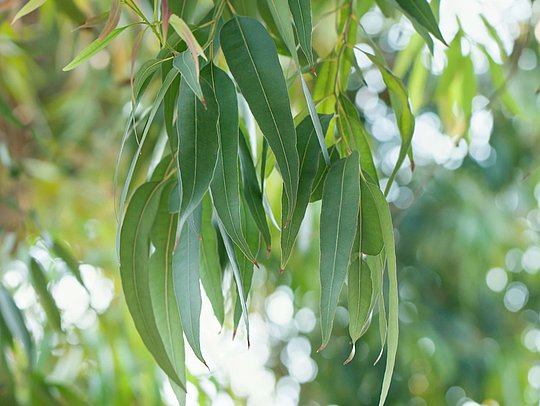
When reading the word “eucalyptus”, you may not think of eucalyptus as a plant at first, but as the epitome of cough sweets and other cold remedies. Perhaps reason enough to take a closer look at the eucalyptus trees that are also called blue gum trees and are incredibly rich in species.
The eucalyptus plant is a true survivalist
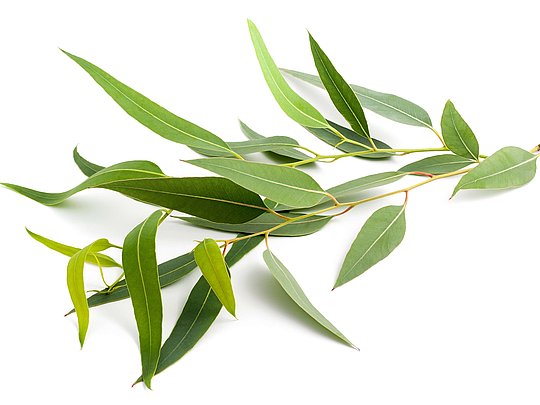
Eucalyptus tolerates great heat and even sprouts again after devastating bush fires. Eucalyptus species even benefit from forest fires because their rootstocks and seeds survive a fire and sprout again very quickly before other plant species have recovered. Overall, the fire is positive for them, not only in competition with other forest plants. It eliminates parasites and even helps the eucalyptus for its reproduction.
Eucalyptus trees are also home to a very special species of animal: the koala bear.
These small marsupials love to eat the aromatic smelling leaves of the eucalyptus. Koalas also love to sleep or rest in the branches of the tall trees for about 18-20 hours per day. This seems due to their low metabolic rate. Since their food is very low in nutrients a lot of energy is needed for its digestion and they have developed strategies to save their energy for this purpose. Sleeping long is one of these strategies.
Eucalyptus is not only of great interest of the koalas
For millions of people, the use of medicinal plants is a main, if not the only, source of health care. Plants will always remain a crucial tool in the traditional medicine and Eucalyptus is one of many important medicinal plants used to produce remedies for colds and respiratory diseases in humans. Just think of cough sweets, cough syrup, nasal sprays or other common cold medication that most of the time contain eucalyptus oil. Also found in mouthwashes or as addition to the sauna infusion –you will for sure know the typical fresh and pointed scent, similar to camphor and its aromatic and refreshing taste.
Did you know?
An adult koala eats between 0.5 and 1 kg of leaves every night, depending on many factors, such as the age of the animal, its sex and where it exactly lives. These cute animals have adapted their "caecum" (appendix) to be an extraordinary organ suited for digestion of fibrous leaves. Other mammals and humans also have an appendix, but the koala's caecum is comparatively very long (200 cm), especially given the body size of a koala. In comparison, a human caecum is only between 2 and 20 cm in length. This appendix harbors billions of bacteria, able to break down the otherwise indigestible fiber. Only by support of these little helpers it is possible to obtain sufficient nutrients from the eucalyptus leaves that can be absorbed by the intestines more easily. Even despite this adaptation to the eucalyptus as food, the koala is still not able to utilize more than 25 percent of the dietary fiber. Consequently, the marsupial is required to eat large quantities of leaves.

Historical facts about eucalyptus
The plant genus Eucalyptus belongs to the myrtle family (Myrtaceae) and comprises over 600 different species. The home of the fast-growing, high and evergreen trees is Australia and Indonesia, where they form the largest part of the tree population. It was around 1770 - Australia was just discovered by the Europeans – when the world got to know the eucalyptus tree. Today, representatives of the genus Eucalyptus can be found in almost all warm climates of the world, as the tree has great importance as relevant source for wood. Despite the many different types of eucalyptus, the stock plant, most cultivated and most popular is Eucalyptus globulus.
Next to the well-known Eucalyptus globulus, which is also named Blue Eucalyptus or Tasmanian Blue Gum, the following species stand representative for the many other species:
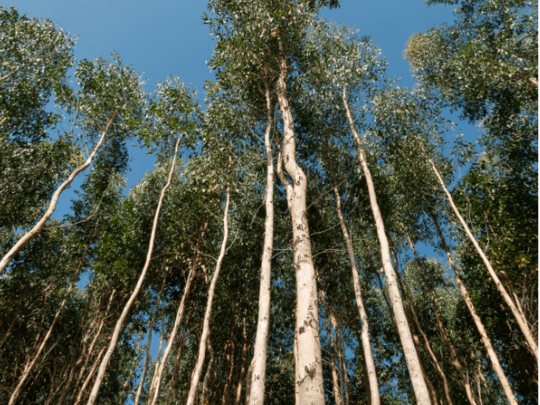
River Red Gum (Eucalyptus camaldulensis): This species appears in South Australia’s riverine, floodplain and estuary systems and therefore is the most widespread eucalyptus species there.
Jarrah (Eucalyptus marginata): This eucalyptus species is common in the southwest of Western Australia. There you can also find a specimen, that is estimated to be 400 to 800 years old. Jarrah wood is termite-resistant and used for furniture, musical instruments and as construction timber.
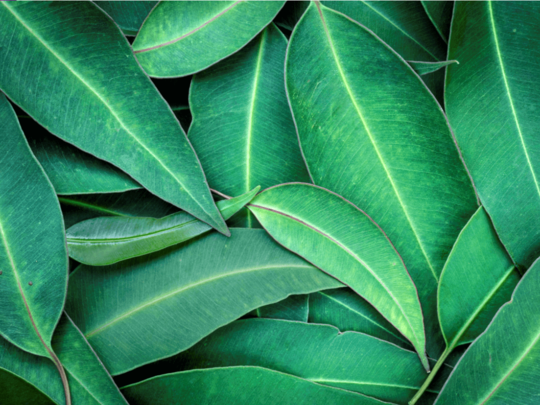
Snow Eucalyptus (Eucalyptus pauciflora): The Snow Eucalyptus occurs in South-East Australia as well as in other subalpine areas, at altitudes ranging from 1300 to 1800 m. It is considerably smaller and usually only reaches growth heights of 8 to 10m.
Giant eucalyptus (Eucalyptus regnans): The giant eucalyptus is also called king eucalyptus. It is considered as the tallest deciduous tree in the world and can reach an age of 400 years.
Did you know?
Together with the North American sequoias (Sequoia sempervirens), the eucalyptus trees are the highest trees in the world. With a height of 132.58 meters, an Australian giant eucalyptus measured in the 19th century holds the historical record.
An accompanying effect of the rapid growth of eucalyptus is a high-water requirement. The roots of the eucalyptus trees grow deep into the earth until they find even the deepest located water supplies. By the way, it was this ability, the eucalyptus owes its popularly known name “Fieberbaum” to. The ability to extract water from the soil was formerly harnessed in common malaria areas. Simply because the tree had drawn water from the ground and thus deterring the malaria transmitting Anopholes, to lay their eggs down. As a result, these mosquitos could no longer reproduce, and malaria was forced back.
In Australia...
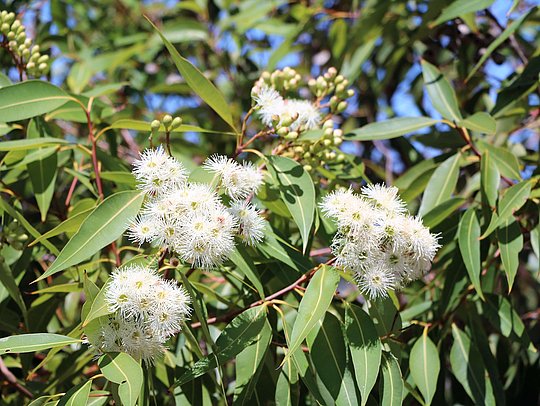
...the acacias and the eucalyptus are as characteristic species of the country as it is the pine of Norway or the elm of England.
The Aboriginal people of Australia had a huge and deep knowledge on their botany and were very conversant with the plant’s properties and practical applications. Next to so many other plants of the vegetable kingdom that were in use by mankind, the medicinal properties of eucalyptus for certain were well known by the native people of Australia.
For example, they used several species of eucalyptus for gastro-intestinal diseases. Antiseptic and astringent qualities were also appreciated for treating wounds, like cuts or sores. Concocted mixtures of eucalyptus species were used for the relief of pains in joints, muscles and in case of toothache. The most popular species, E. globulus was used in form of infusions against colds, in poultices to treat rheumatism, or inhaled when people were suffering from headaches.
Another species that was used as remedy for treating colds was Corymbia dichromophloia. Either the nectar was taken as tonic or the gum was boiled with water and sugar to become a liquid drink, helpful for respiratory diseases and as anaesthetic for e.g. toothache.
References upon request
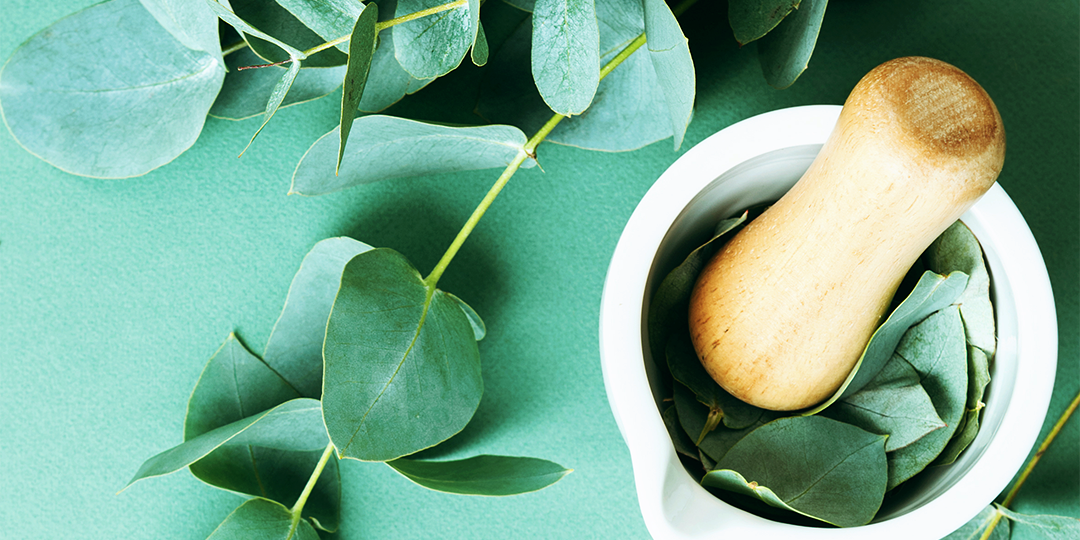
Click here to get more information about eucalyptus

Elisabeth Rohrer
After her study in agriculture sciences at the university of natural resources and life sciences in Vienna, Elisabeth joined the Delacon team in December 2013 as Technical Communications Manager - a position, she always exerted with pleasure. Since 2021, her task areas have been extended and thus, she is also supporting colleagues in writing offside the technical focus as Content Manager. Elisabeth describes herself as a great animal and nature lover and prefers to spend her free time high up in the mountains with her little family, away from the hustle and bustle.










